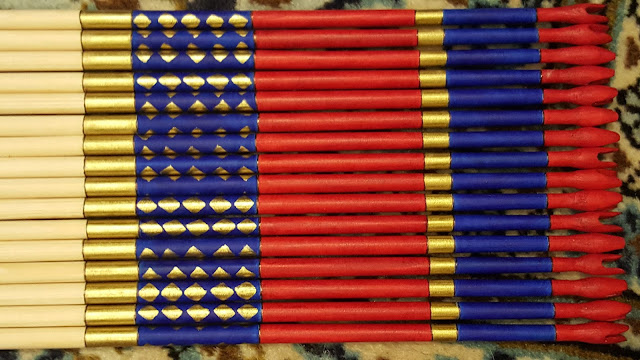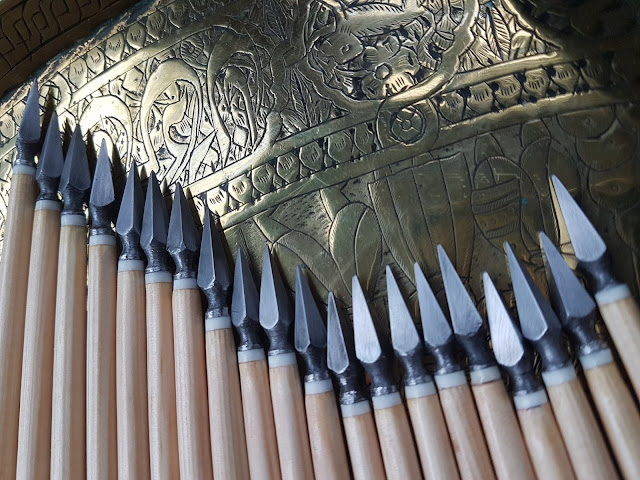I built Ottoman Turkish arrows in the past and with each time I learned new things. This is my passion for the last years.
Archery is the art of repetition. You are constantly trying to keep every factor the same with each shot - bow arm angle, pulling arm angle, draw length, anchor point, aiming point, release etc in order to increase accuracy. If everything is the same, then theoretically you will hit your target each time. In reality it is not so easy e.g. you can't guarantee aiming at the same spot, especially if you are shooting instinctive (without any aiming device, scope). One of these factors is the arrow. Your arrows need to be as uniform/standard as possible. If one weighs 3 gram more, is slightly shorter, is differently tapered, you will not hit the target with your next shot even if you aimed at the same spot or managed to keep all the other factors the same.
(Some past work:)
Ottoman war arrows with broad heads with sinew wrapping
Ottoman target arrows
Ottoman war arrows with armour piercing heads, sinew wrapped
Now I tried a new set of 20 Ottoman war arrows, again it is maybe better than my last sets but it is only an iteration to build the arrow masterpieces in the museums. I feel it is impossible to get close to the craftsmanship of the old arrow masters.
The first challenge I faced was the arrow length, which is correlated to the weight, which is the second challenge. Our ancestors in the 16th-17th cc were smaller than us, thus their arrows were shorter (typically 68-72cm total length). If you replicate a museum arrow 1:1, you will not be able to shoot it. Yet how will you make it bigger? and how heavy should it be?
First of all, the typical anchor point for Ottoman war archery is just below the chin, similar to today's olympic archery. With this anchor point, my draw length is 27.5 inch.
I found different arrow information in catalogues, books, online and collected the weight and length information in an excel table. Then I created a graph in which you can see the ratio length to weight. I included Ottoman and also Tatar war arrows. Slowly you could see clusters of typical arrow length and weight. I also included an average line each. (if you find any more arrow specs, let me know I will include it).
As my draw length is 27.5'', I reckoned with a total arrow length of 74cm (including arrow point and nock). For that length, I assumed the arrow weight will be around 27 gram according to the above graph.
The above is good reference. I see a lot of Turkish colleagues drawing until the ear (and breaking those Grozer Turkish bows). Drawing to the ear is rather Tatar archery and you need a Tatar bow which has a longer draw.
Second challenge is the tapering (called endam in Turkish). Turkish arrows are always tapered which makes the arrow more aerodynamic, thus increases speed. It is thinner at both ends and thicker in the middle. But how thin?
Below are measurements for a Turkish war arrow from a museum (blue). Thickness is measured in mm starting from the base of the shaft right after the arrow head. This way you can 'visualize' the taper. This original arrow was shorter than the arrow I wanted to make. So I tried to estimate values for a slightly longer arrow. The result is the red graph. You will see how far more superior the old masters are! If you pay close attention you will see that the blue graph resembles a cross section of an airplane wing.
Anyway, my arrows are not as perfect as the old Turks' arrow but still they fly very well.
Some extra information:
- The arrow points are handforged steel with hardened tips, 3.6 gram.
- Added bone washers so the arrows survive the impact on armour
- Total arrow length: 74cm
- Total arrow weight: 26.5 gram
Gokmen Altinkulp
 |
| Feathers in preparation (without quill) |
 |
| Shafts after painting |
 |
| Arrow heads: hand forged armour piercing heads with bone washers |






























